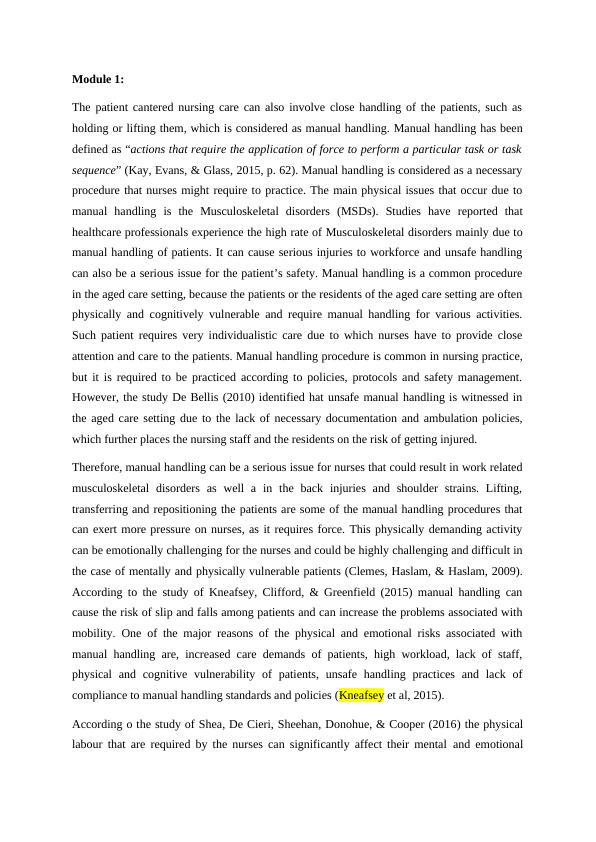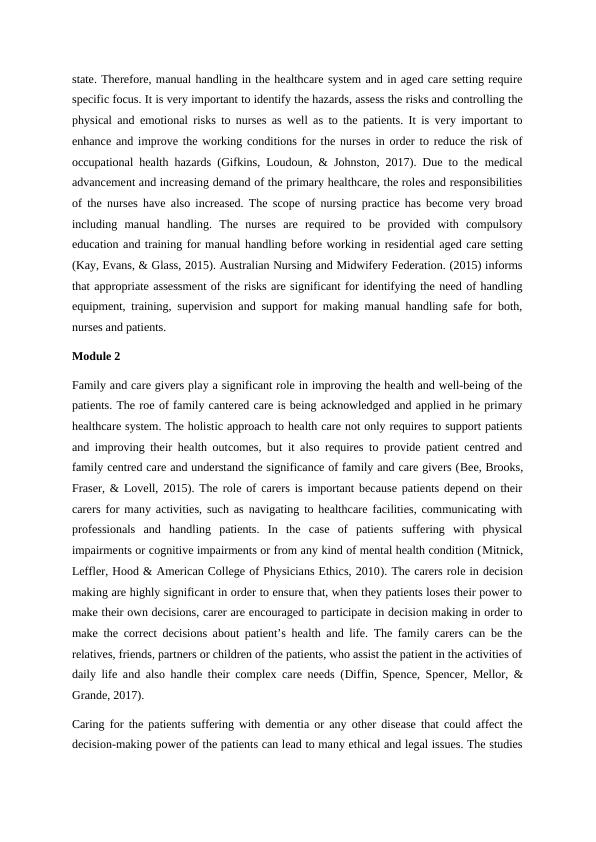Manual Handling in Nursing Care: Risks and Challenges
5 Pages1800 Words264 Views
Added on 2023-06-05
About This Document
This article discusses the risks and challenges associated with manual handling in nursing care, particularly in aged care settings. It highlights the physical and emotional risks to nurses and patients, and the importance of identifying hazards, assessing risks, and controlling them. The article also emphasizes the significance of family-centered care and the role of carers in decision-making.
Manual Handling in Nursing Care: Risks and Challenges
Added on 2023-06-05
ShareRelated Documents
End of preview
Want to access all the pages? Upload your documents or become a member.
Leadership in Clinical Practice: Addressing Manual Handling Issues in Hospitals
|11
|3095
|175
Clinical Integration in Aged Care Assignment
|7
|1318
|38
Nursing Practice and Challenges: Manual Handling, Fall Risk, and Workplace Stress
|11
|3184
|147
Safe Patient Handling and Mobilisation - Nursing Assignment
|13
|3122
|297
Clinical Integration Specialty Practice Doc
|12
|3034
|66
Case Study on Nursing Literature
|6
|1374
|43


